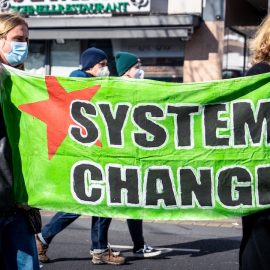

This article is an excerpt from the Shortform book guide to "A Promised Land" by Barack Obama. Shortform has the world's best summaries and analyses of books you should be reading.
Like this article? Sign up for a free trial here .
What is the DREAM act? Why did Obama propose this legislation?
For Obama, the DREAM act was a top priority. It meant that children brought to the U.S. by undocumented parents would be permanent legal residents and have a path to citizenship.
Read more about Obama, the DREAM act, and the struggle to make it a reality.
Obama and The DREAM Act
The final priority for President Obama during the lame-duck session was the Development, Relief, and Education for Alien Minors (DREAM) Act. This was a proposal to establish permanent legal residence and provide a path to citizenship for undocumented immigrants who’d been brought to the United States by their parents as children.
The immigration situation had been a slow-rolling crisis for decades, with 11 million undocumented people in the U.S. by 2010, primarily from Central America, drawn north by economic opportunity. Their presence in the U.S. had become an intense political issue, provoking nativist and xenophobic sentiment on the right, as well as economic concern among labor unions on the left, who feared that undocumented immigrants would lower wages and take jobs away from native-born Americans.
Because of their immigration status, undocumented people were frequently exploited by unscrupulous employers who knew that they had little legal recourse to fight back. For Obama, helping undocumented workers—and especially their non-citizen children—was a simple matter of justice.
The children of undocumented workers were young men and women (known as “Dreamers”) had come to the United States as children through no choice of their own. Growing up in America, the U.S. was the only country they’d known and it was the place where they’d made contributions to their communities, participated in the economy, served in the military, and started families of their own.
In talking with Dreamers, Obama learned that many of them hadn’t even known about their immigration status until they’d tried to apply for mortgages or college loans and were asked to provide proof of citizenship. Because of their undocumented status, they were legally at risk of deportation. For Obama, such a fate was monstrously unjust—these young people had no roots in their countries of origin, did not speak the language, and might possibly be exposed to physical danger if they were forced to return.
Unfortunately, for Obama and the Dreamers, this bill would be defeated by a coalition of Republicans and conservative Democrats in the Senate. The legislation came tantalizingly close, but ultimately fell five votes short of breaking a filibuster.
This was one of the bitterest defeats of Obama’s presidency. After the bill’s death, all he could do was meet with a group of Dreamers, hug and comfort them, tell them that America was their home too—and that he would never stop fighting for them.

———End of Preview———
Like what you just read? Read the rest of the world's best book summary and analysis of Barack Obama's "A Promised Land" at Shortform .
Here's what you'll find in our full A Promised Land summary :
- How Barack Obama went from relative obscurity to the first Black president
- What principles guided his political leadership style
- Why Obama retained an unshakable faith in the potential and promise of America






